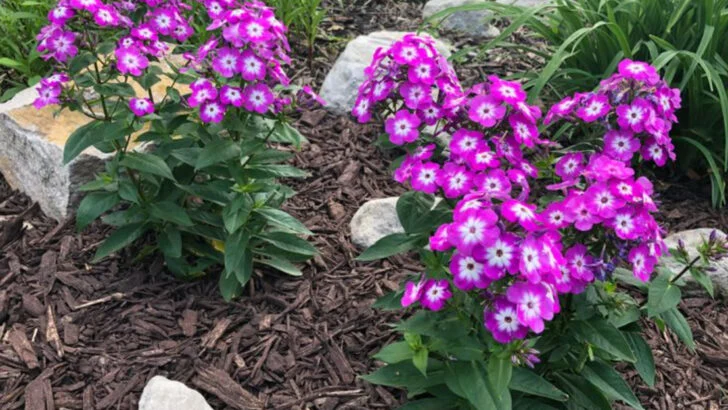Some flowers are just plain lazy. They show up, strut their colors for a couple weeks— and vanish before the party’s even started. Meanwhile, the real MVPs keep blooming through heatwaves, rainstorms, and your occasional watering forgetfulness. These 13 perennials are the ones you want in your corner. They stick around. They thrive when others fizzle. They make your garden look alive well past July. But not every plant is cut out for the spotlight. Some fade fast, leaving behind droopy stems and gardener’s regret. So before you hit the nursery, take a look. This list separates the long-haul bloomers from the summer dropouts— and might just save your garden from a mid-season meltdown.
Black-Eyed Susan (Rudbeckia)
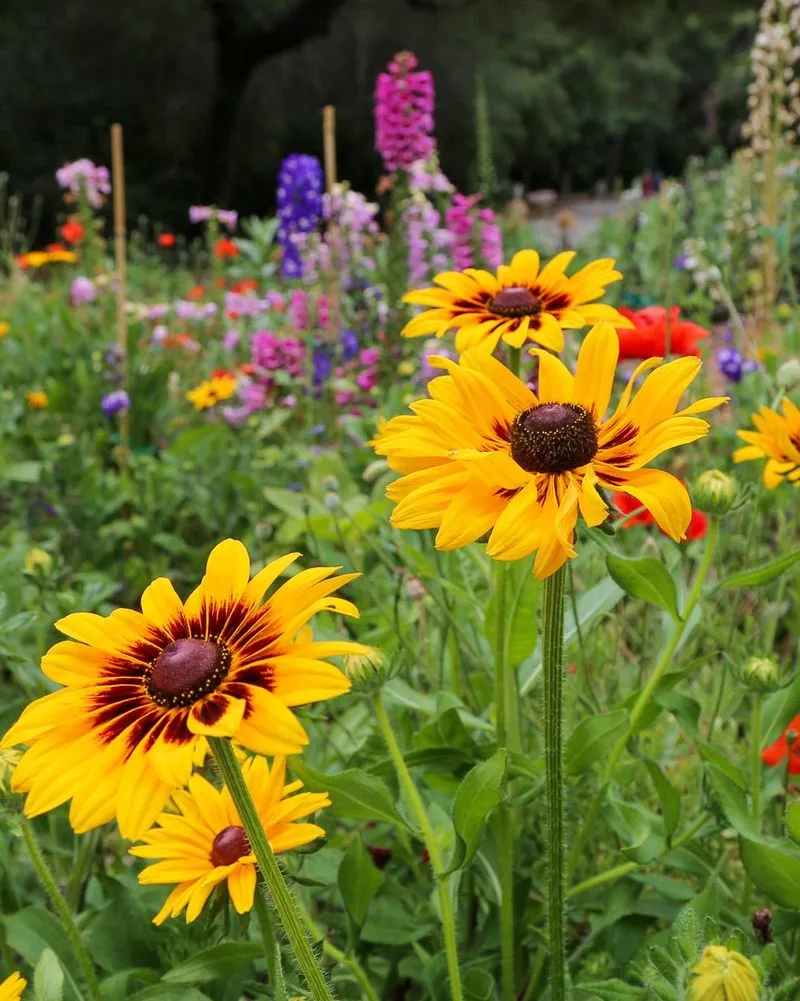
These yellow, daisy-like flowers bloom from midsummer to fall and attract bees and butterflies. They thrive in full sun and don’t need much attention once they’re established.
What sets it apart: Even in poor soil, they keep going and often self-seed year after year.
Coneflower (Echinacea)
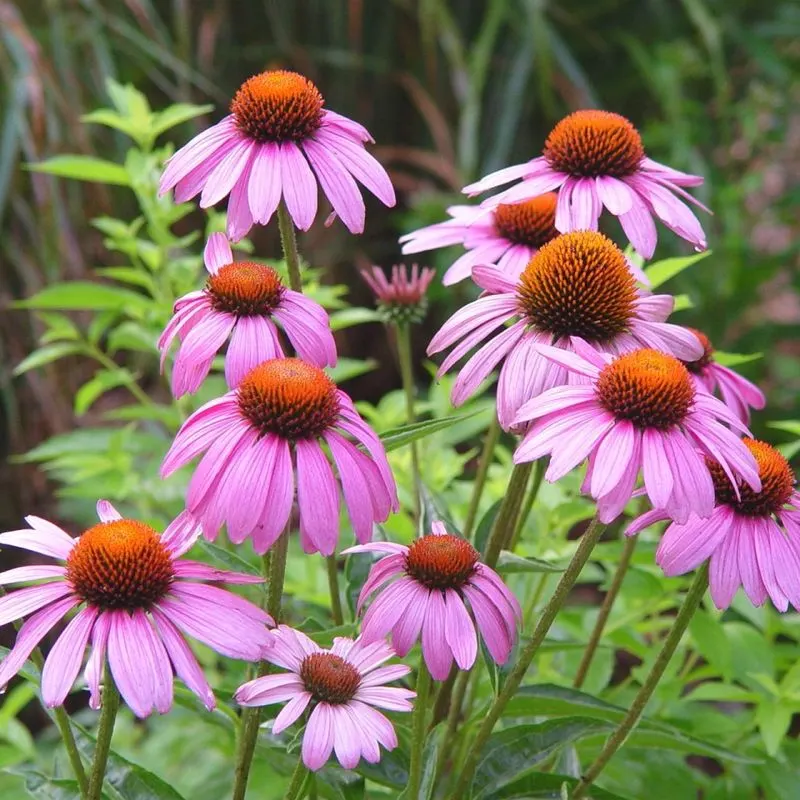
Known for its sturdy stems and purple-pink petals, coneflower blooms into late summer. It handles heat and drought well and continues to flower even after some petals drop.
What sets it apart: Birds love the seed heads, which stay upright into fall.
Russian Sage (Perovskia)
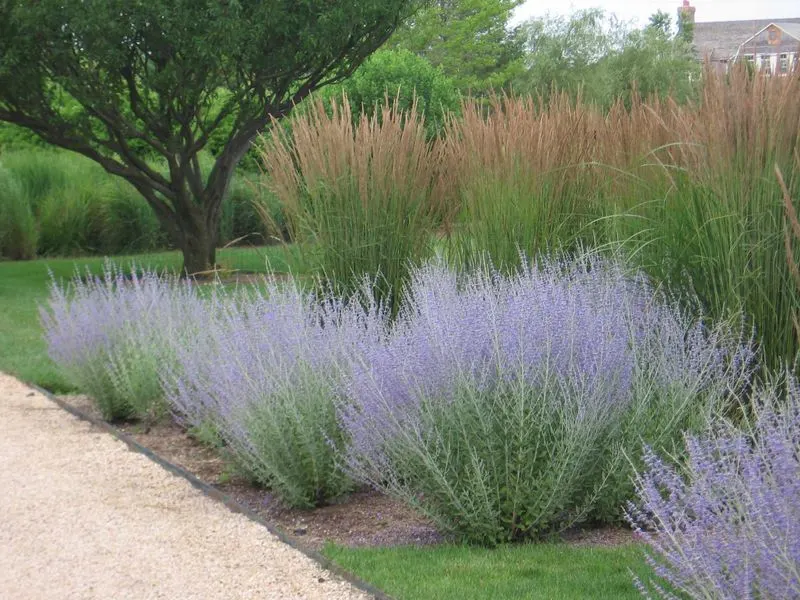
With silvery foliage and wispy lavender-blue flowers, this plant blooms steadily from mid-summer into fall. It does best in hot, dry spots and can grow several feet tall.
What sets it apart: The soft, aromatic leaves give the garden texture even before it blooms.
Coreopsis (Tickseed)

Coreopsis produces small, sunny yellow or red-tinted flowers from early summer through fall. It works well in mixed borders or pollinator gardens.
What sets it apart: Deadheading spent flowers keeps it blooming for months without much fuss.
Catmint (Nepeta)
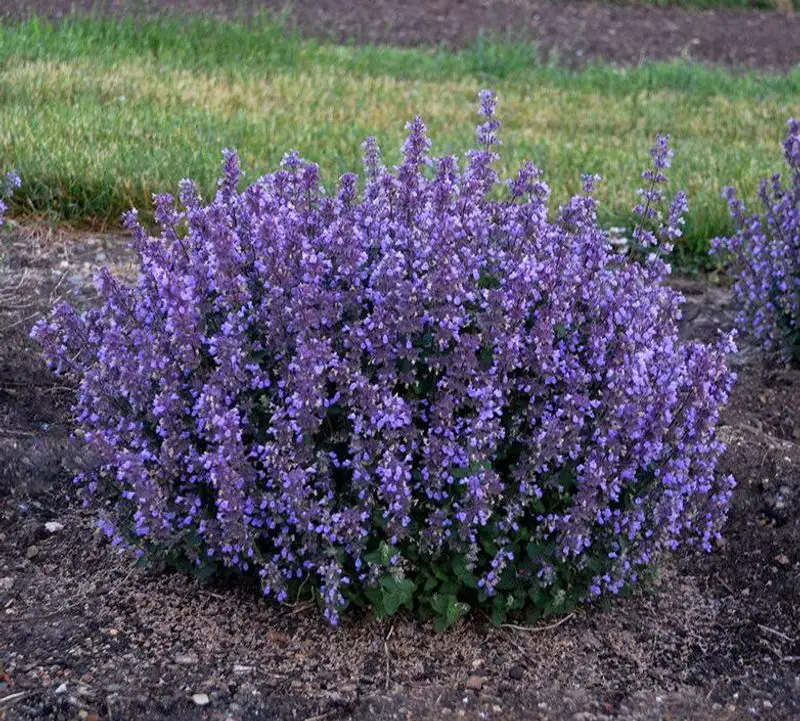
This low-growing perennial spreads easily and produces soft purple-blue flowers all summer long. It tolerates drought and poor soil and gives off a light minty scent.
What sets it apart: Bees and cats both love it, but deer usually leave it alone.
Daylilies (Hemerocallis)
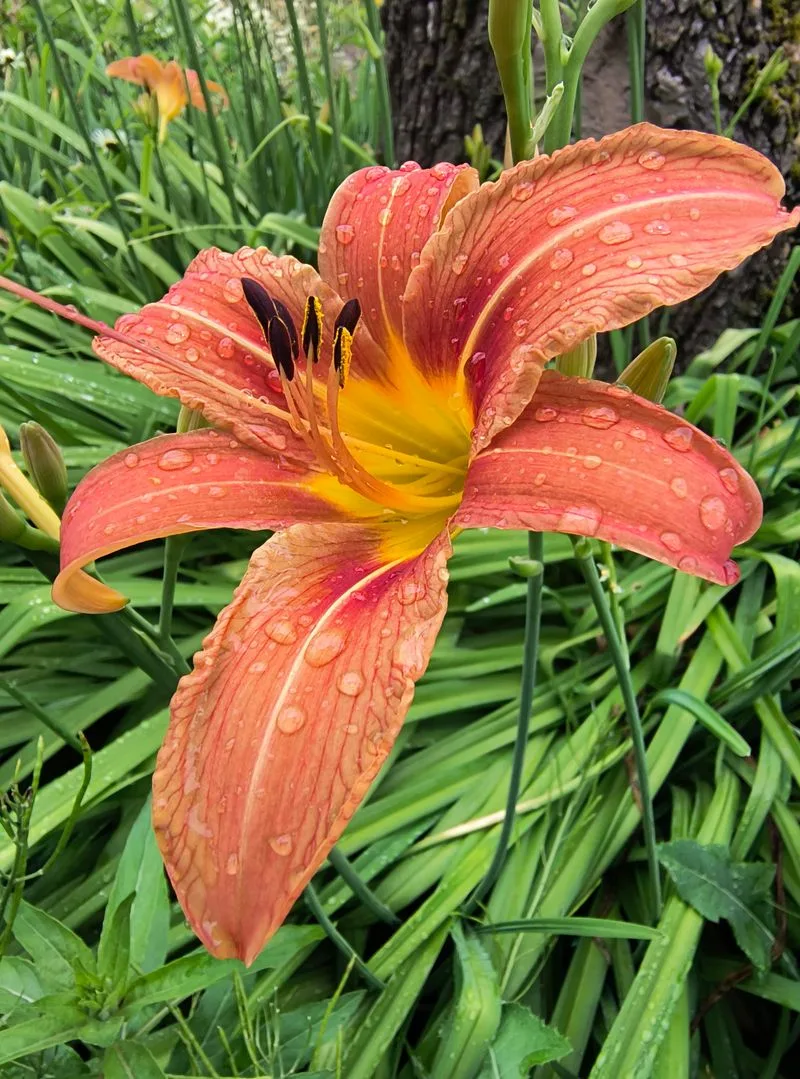
Though individual blooms only last a day, daylilies send up new ones for weeks, especially reblooming varieties. They come in nearly every color and do well in many climates.
What sets it apart: Older varieties might bloom just once, but newer types can rebloom into early fall.
Shasta Daisy (Leucanthemum)
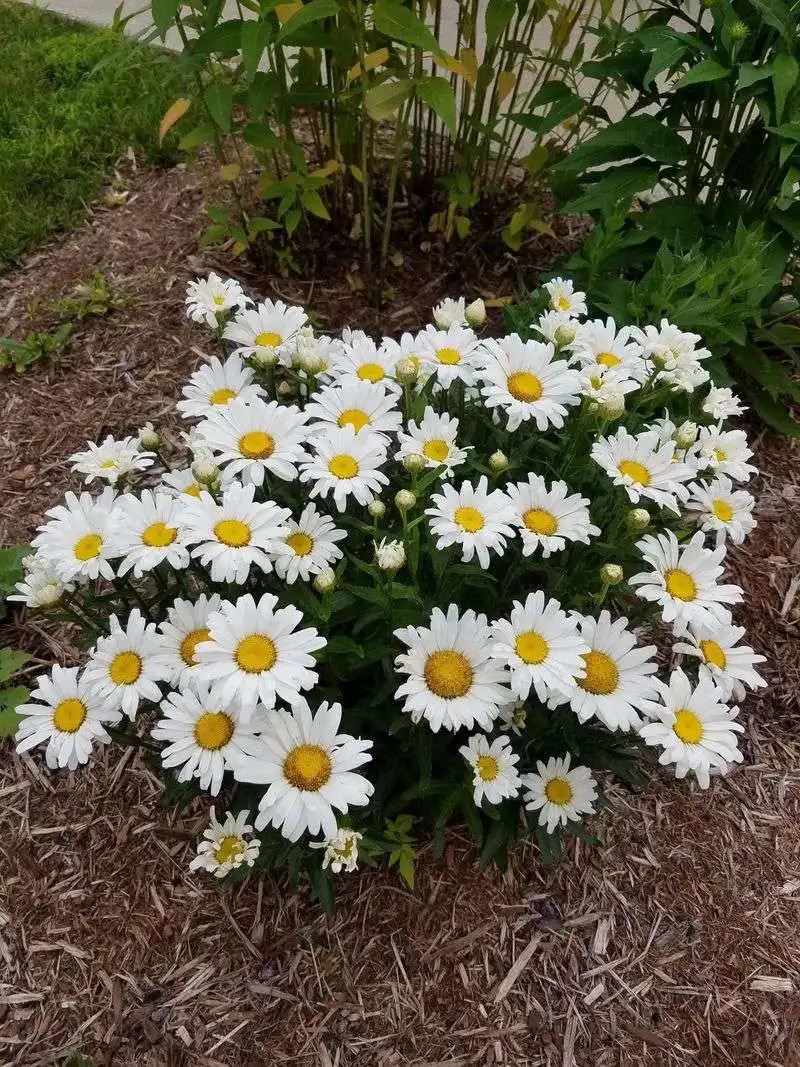
These white-petaled flowers with yellow centers bloom steadily through summer and look great in both formal and cottage gardens. They need full sun and benefit from occasional dividing.
What sets it apart: They pair beautifully with coneflowers and black-eyed Susans for a long-lasting trio.
Sedum ‘Autumn Joy’
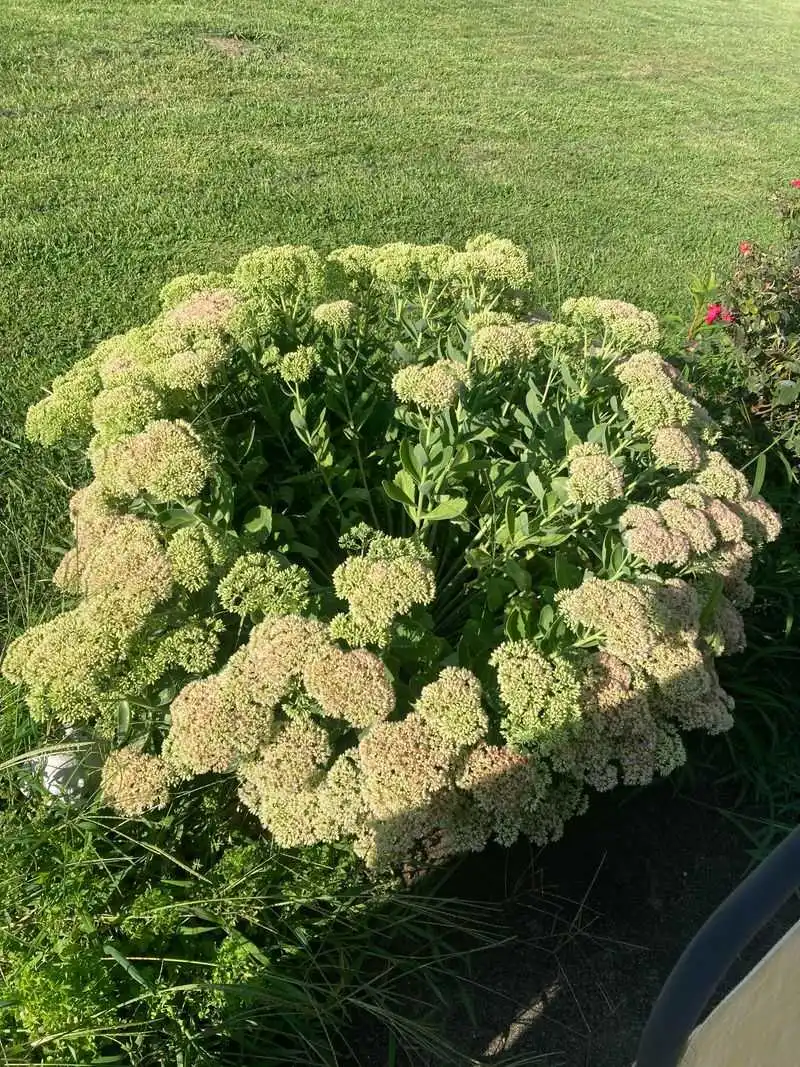
This succulent-like plant starts blooming in late summer, with flowers that shift from pink to rust as fall sets in. It needs little water and holds its shape well.
What sets it apart: Its blooms look good even as they dry, offering texture into early winter.
Yarrow (Achillea)
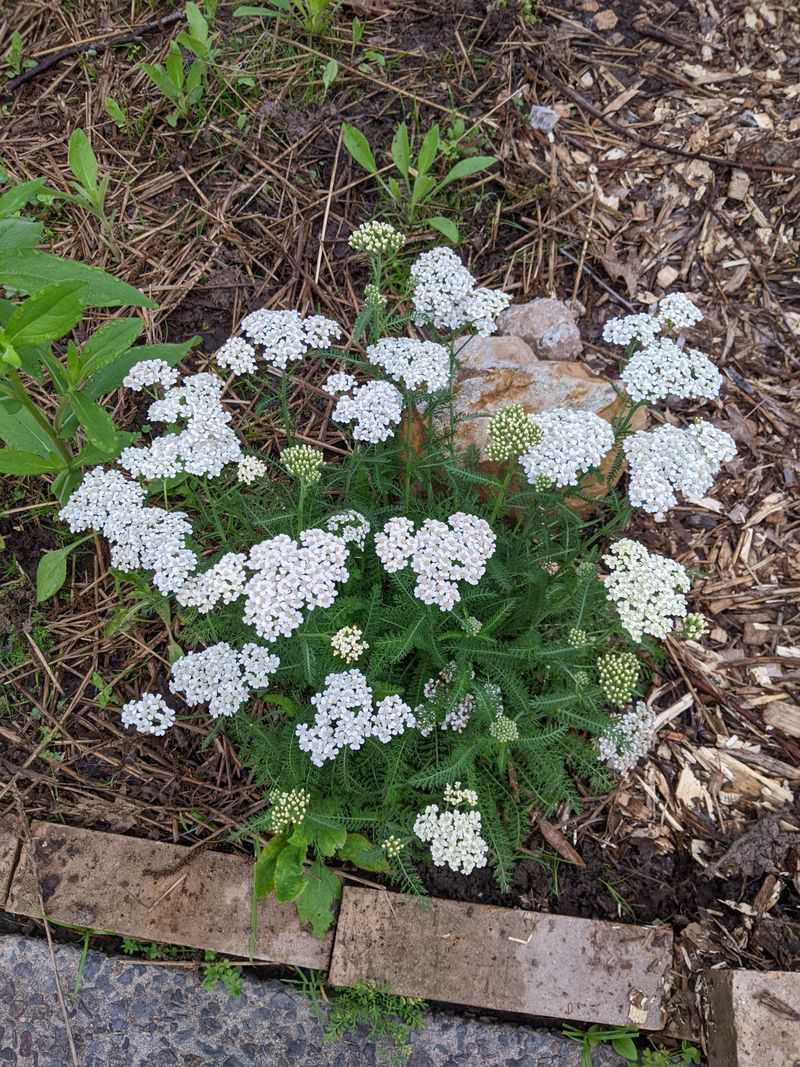
With flat-topped flower clusters in red, yellow, pink, or white, yarrow blooms for weeks and attracts pollinators. It grows well in dry soil and open spaces.
What sets it apart: Foliage is feathery and soft, and some gardeners dry the flowers for arrangements.
Blanket Flower (Gaillardia)
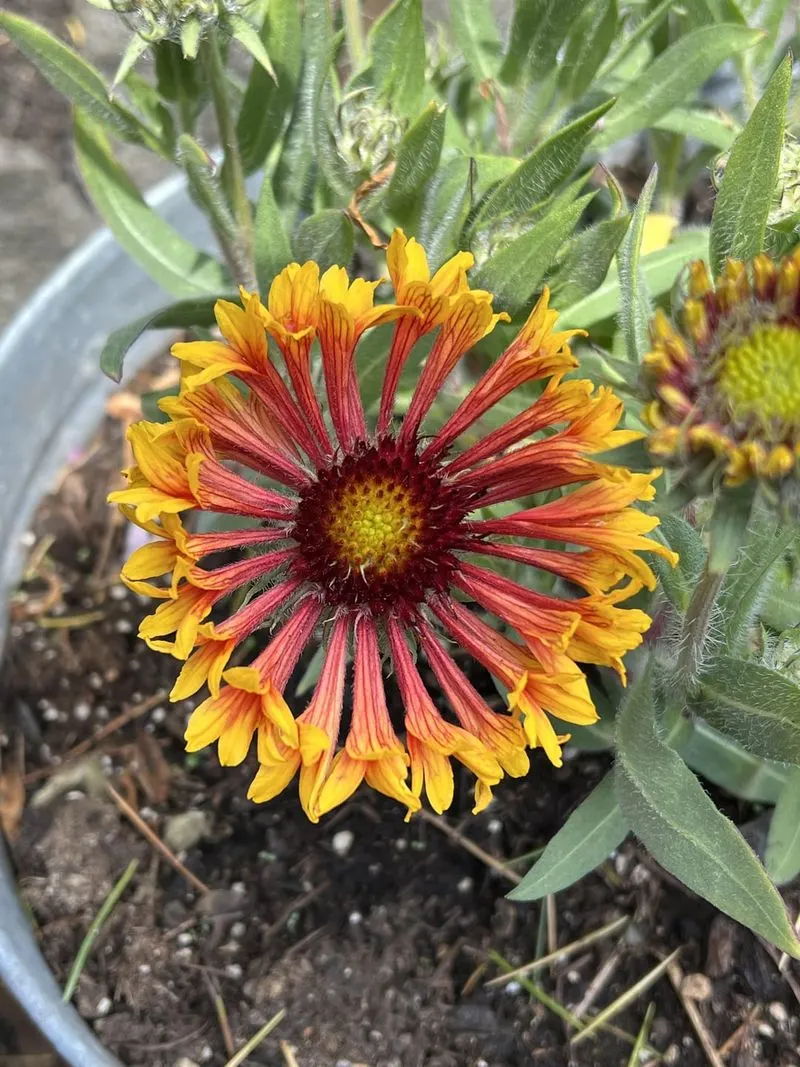
Bright red and yellow blooms appear from early summer into fall, especially if spent flowers are trimmed. It thrives in hot, dry locations and sandy soil.
What sets it apart: The bold colors don’t fade in full sun, even during heat waves.
Salvia (Perennial Varieties)
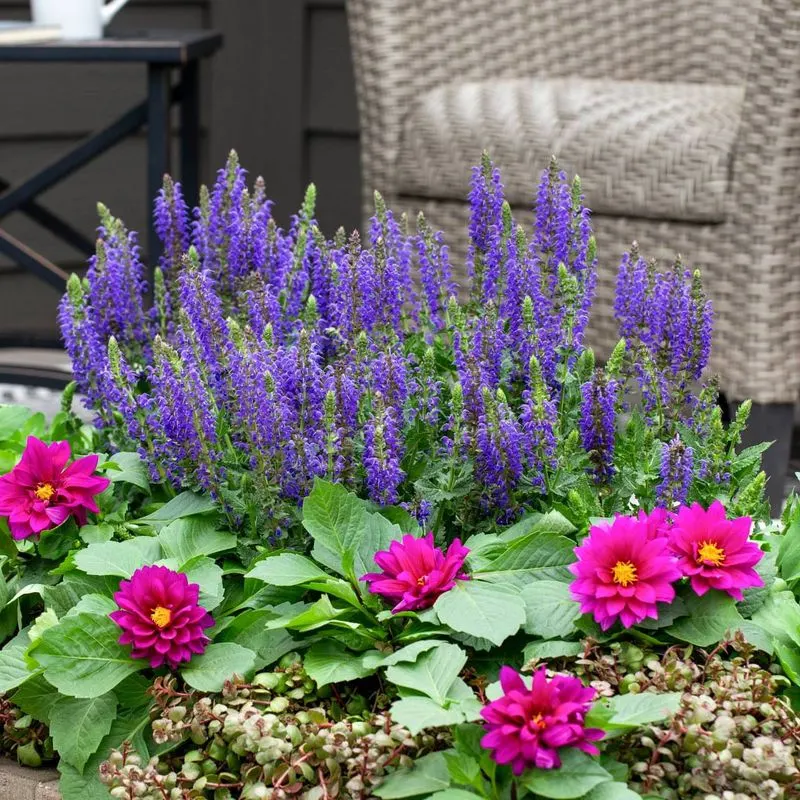
Many salvias bloom from early summer to frost and come in purple, red, and blue shades. They attract hummingbirds and can handle heat and drought.
What sets it apart: They’re easy to shear back midsummer for a fresh flush of flowers.
Bee Balm (Monarda)
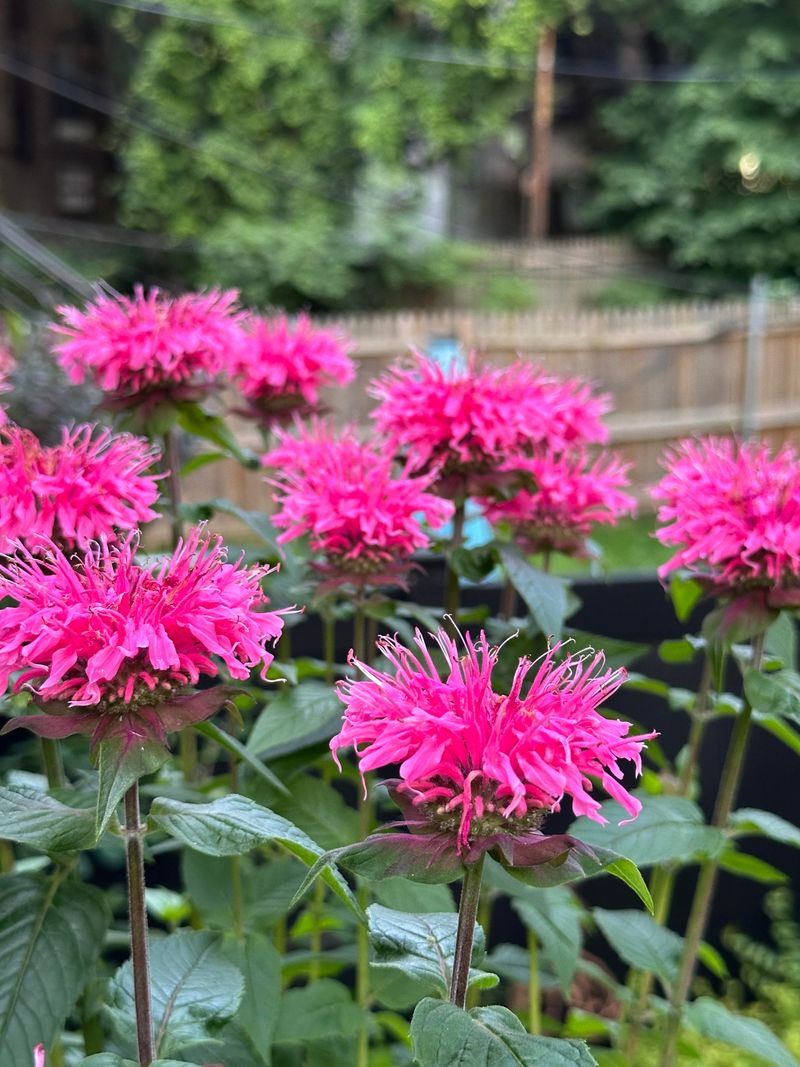
This native perennial has shaggy, brightly colored blooms and a minty scent. It blooms in mid to late summer and grows well in moist, sunny spots.
What sets it apart: It draws hummingbirds, bees, and butterflies—sometimes all at once.
Garden Phlox (Phlox paniculata)
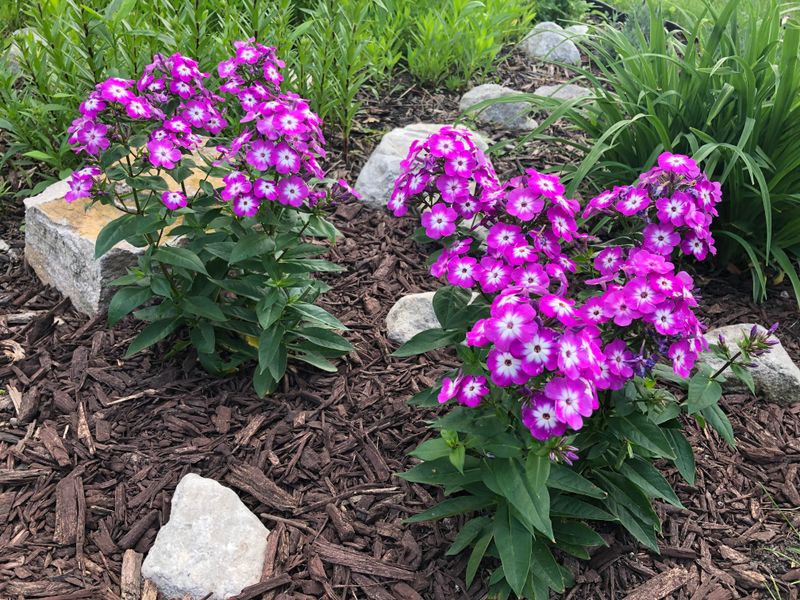
Garden phlox adds soft color from midsummer to fall, especially in pink, white, and lavender. It prefers moist, rich soil and good air circulation.
What sets it apart: Taller than many summer bloomers, it adds height and a sweet fragrance.
Bleeding Heart (Dicentra)
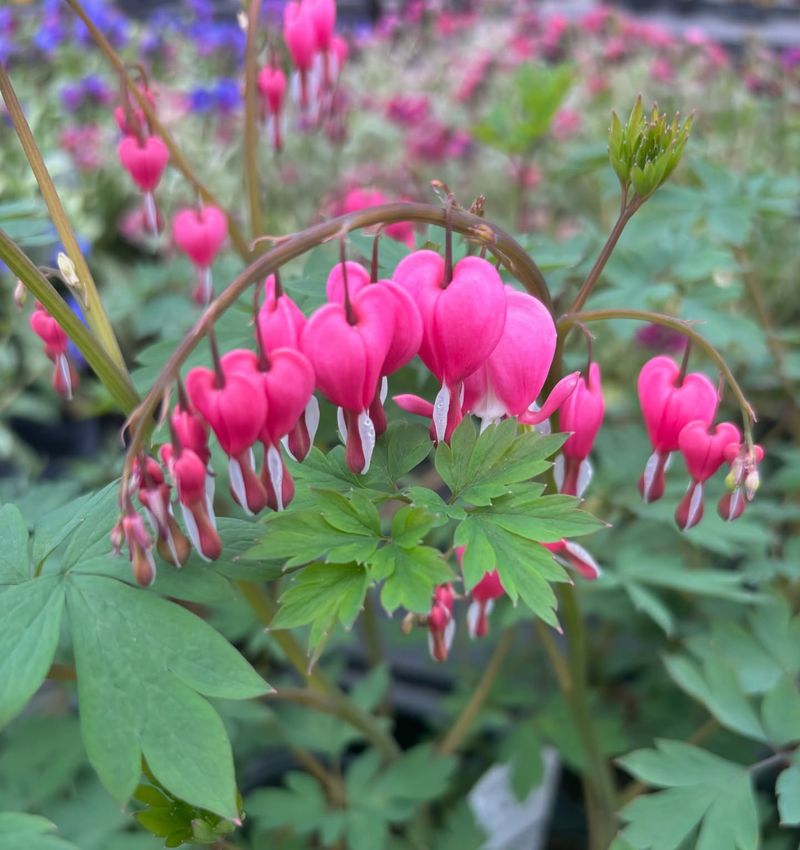
Known for its heart-shaped pink blooms in spring, bleeding heart usually fades by midsummer. Its foliage yellows and dies back unless grown in shade with moist soil.
What sets it apart: When it disappears, the space can look empty unless you’ve layered in other plants.
Oriental Poppy (Papaver orientale)
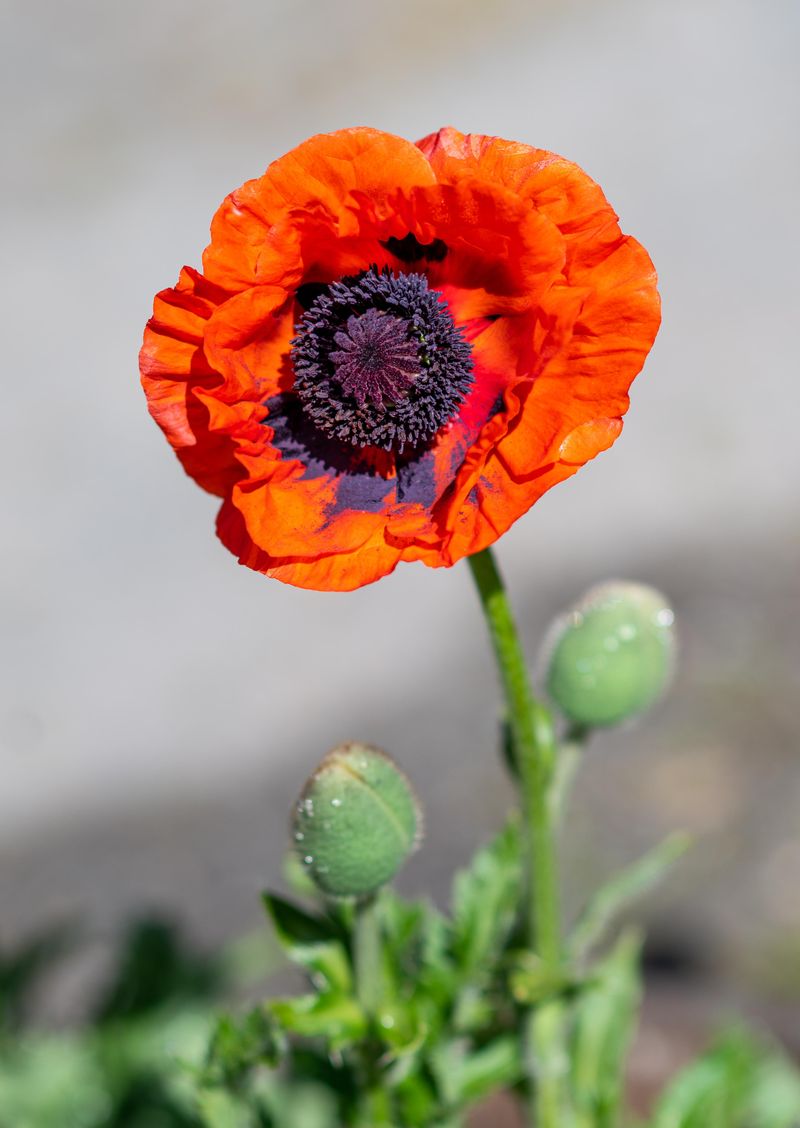
Poppies burst into bloom in late spring but often vanish by July. Their tall, fuzzy stems dry out quickly once flowering ends.
What sets it apart: The blooms are striking—but the exit is sudden and dramatic.
Virginia Bluebells (Mertensia virginica)

This spring ephemeral lights up the garden early, then disappears completely by early summer. It prefers shaded, woodland-like areas.
What sets it apart: It pairs well with hostas, which can fill in once the bluebells retreat.
Jacob’s Ladder (Polemonium caeruleum)
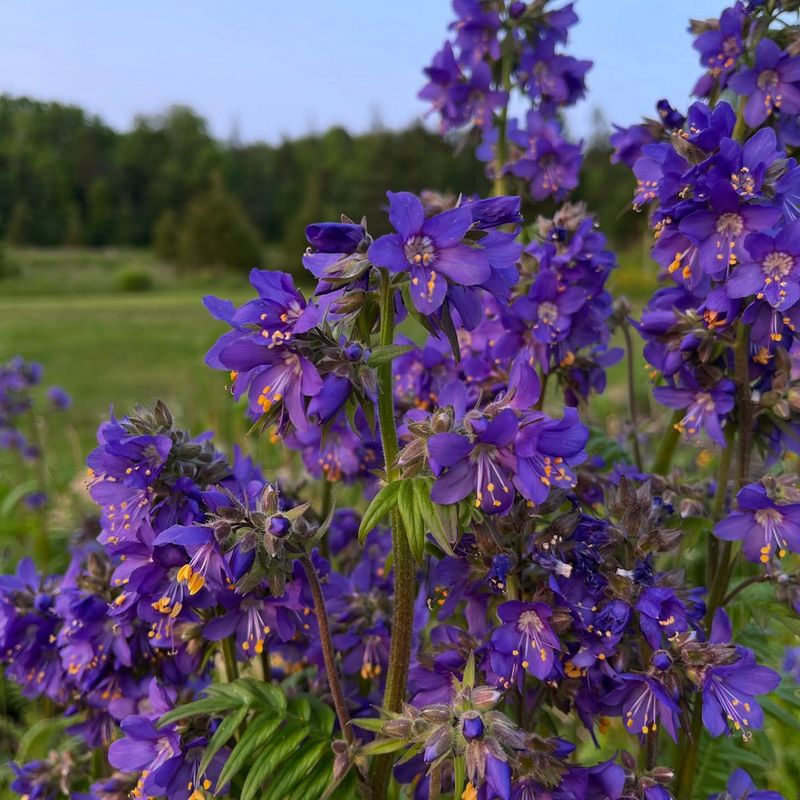
The lacy foliage and blue or lavender flowers are lovely in spring, but they fade quickly in hot weather. Plants may go dormant or stop flowering altogether after June.
What sets it apart: It’s often grown more for spring interest than summer stamina.
Wild Columbine (Aquilegia canadensis)
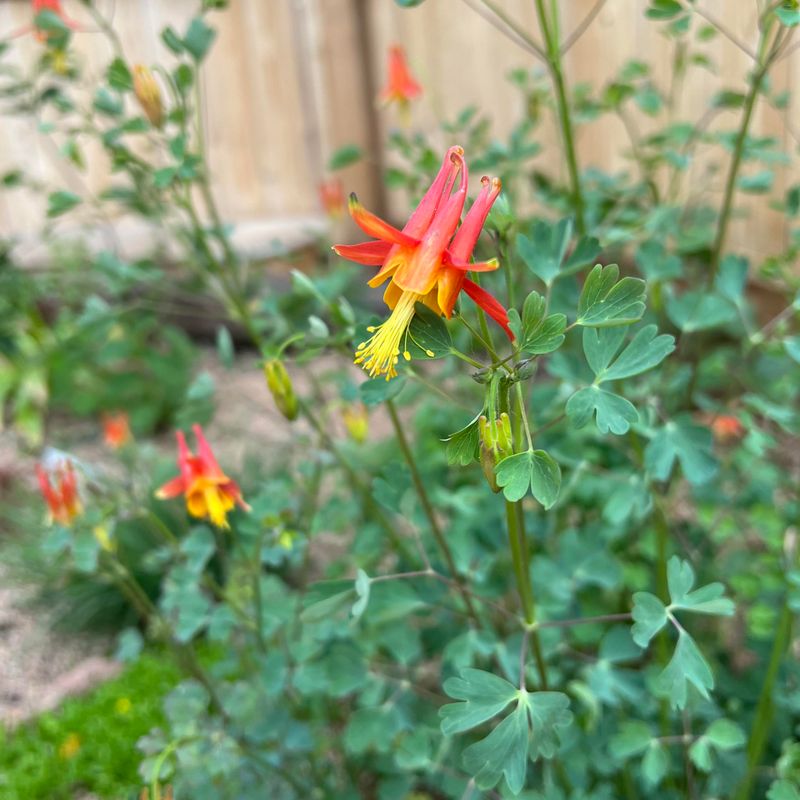
Native columbines bloom in late spring but go dormant once temperatures rise. They may reseed, but the main plant often vanishes by midsummer.
What sets it apart: The airy, nodding flowers attract early pollinators but leave a gap behind.
Trillium
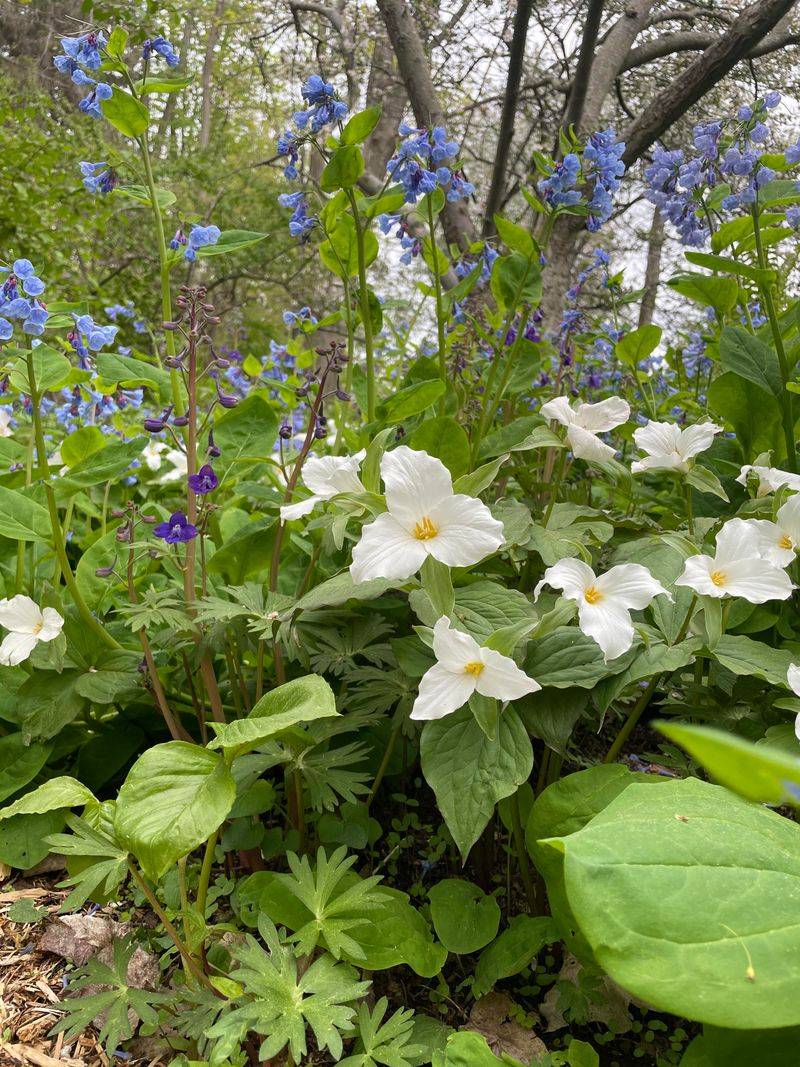
A woodland native with distinctive three-petal flowers, trillium blooms early then dies back completely. It prefers cool, shady areas and doesn’t like to be disturbed.
What sets it apart: It disappears so completely, you might forget where you planted it.
Dutchman’s Breeches (Dicentra cucullaria)
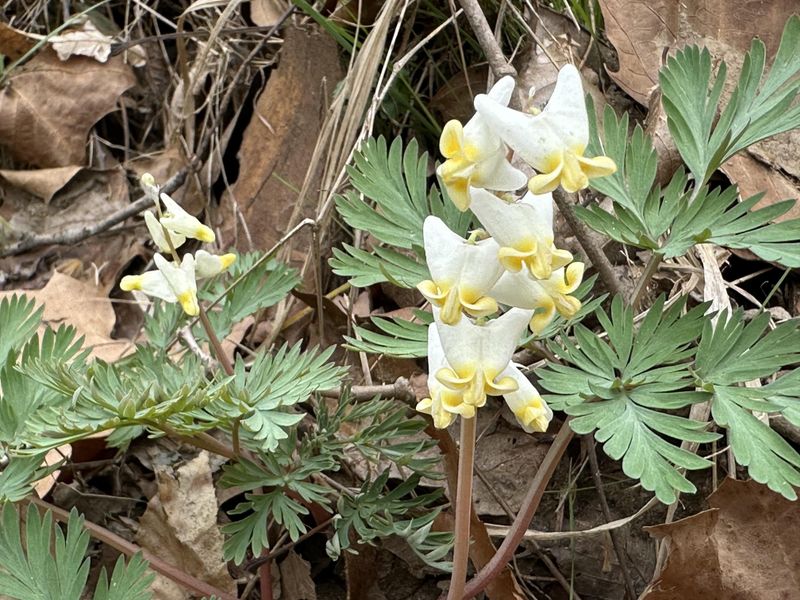
Similar to bleeding heart, this early bloomer thrives in spring but goes dormant quickly. It does best in woodland gardens with moist soil and filtered shade.
What sets it apart: Its bloom time can last just a few weeks—blink and you might miss it.

